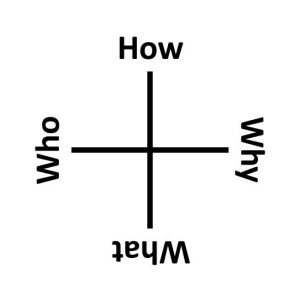 “I’m always looking for the Hows and the Whys and the Whats,” said Muskrat, “That is why I speak as I do. You’ve heard of Muskrat’s Much-in-Little, of course?”
“I’m always looking for the Hows and the Whys and the Whats,” said Muskrat, “That is why I speak as I do. You’ve heard of Muskrat’s Much-in-Little, of course?”
“No,” said the child. “What is it?”
Muskrat stopped, cleared his throat, ruffled his fur, drew himself up, and said in ringing tones, “Why times How equals What.” He paused to let the words take effect. “That’s Muskrat’s Much-in-Little,” he said.
— From “The Mouse and His Child”, by Russell Hoban
“What?,” asked the child.
“Yes, exactly!,” said Muskrat.
— Not in the book
“Who?,” said the Owl.
— Maybe somewhere in the book
Further Reading:
https://en.wikipedia.org/wiki/The_Mouse_and_His_Child
http://www.ocelotfactory.com/hoban/mouse.html
In Latin, Multum in Parvo.
And now, a nice poem:
Much in Little, by Yvor Winters
Amid the iris and the rose,
The honeysuckle and the bay,
The wild earth for a moment goes
In dust or weed another way.
Small though its corner be, the weed
Will yet intrude its creeping beard;
The harsh blade and the hairy seed
Recall the brutal earth we feared.
And if no water touch the dust
In some far corner, and one dare
To breathe upon it, one may trust
The spectre on the summer air:
The risen dust alive with fire,
The fire made visible, a blur
Interrate, the pervasive ire
Of foxtail and of hoarhound burr.
https://www.poetryfoundation.org/poems/47783/much-in-little
https://en.wikipedia.org/wiki/Yvor_Winters
<>



